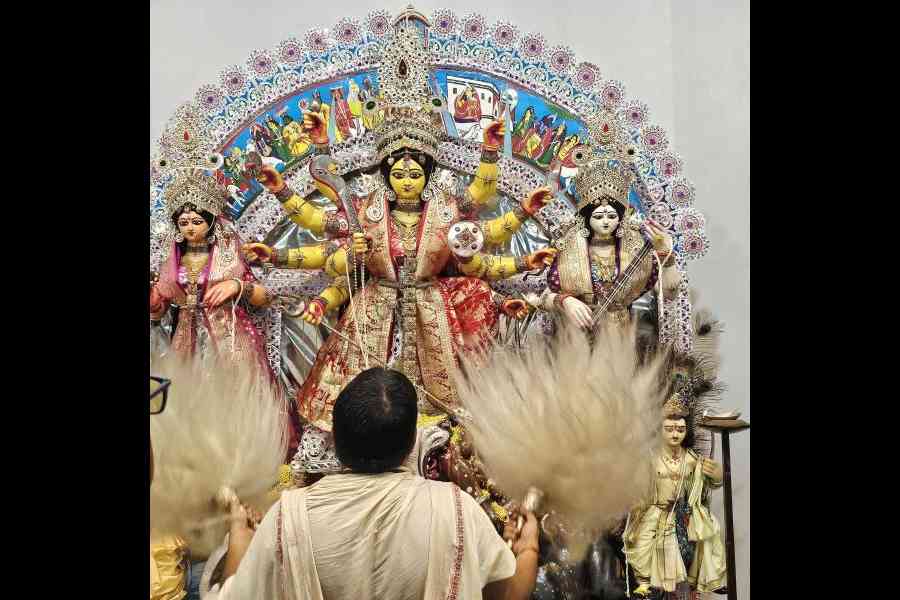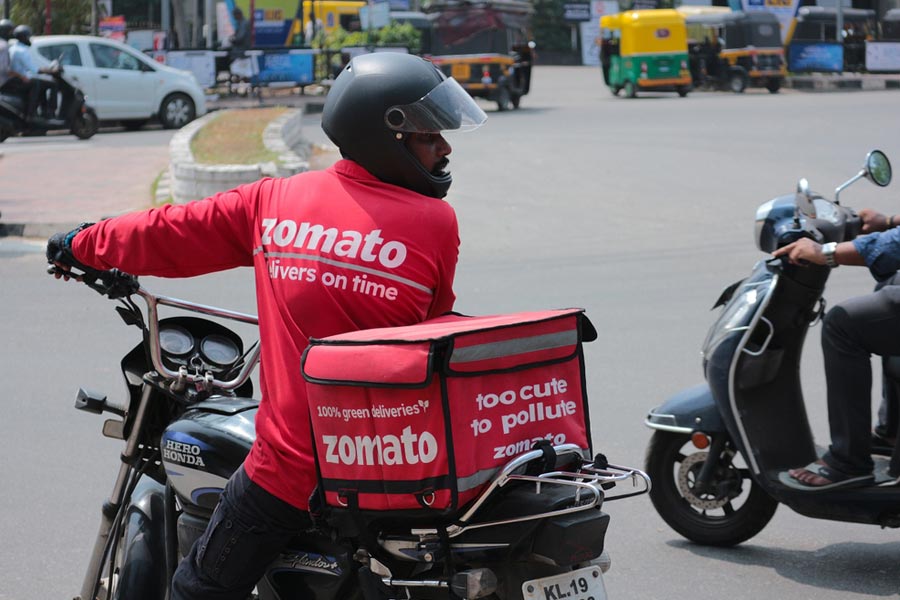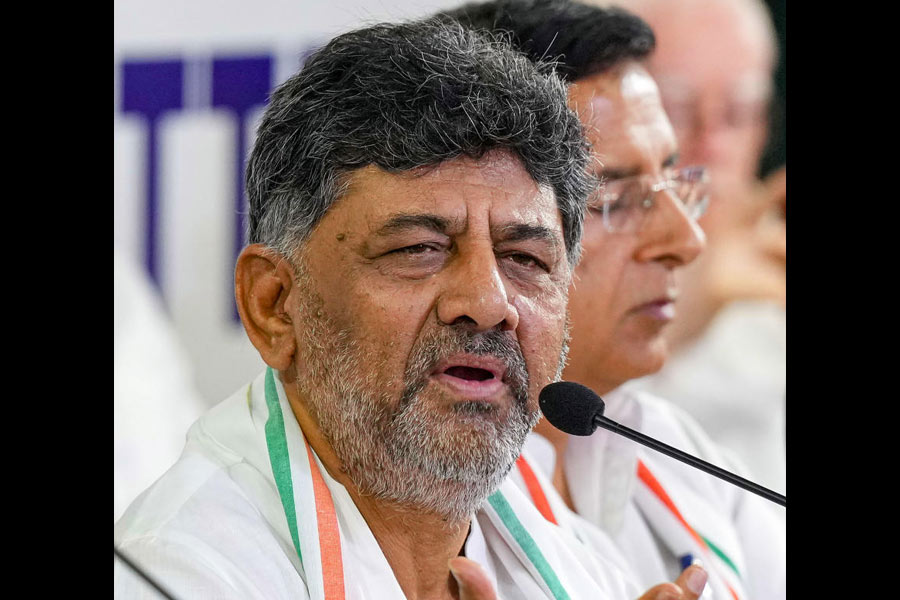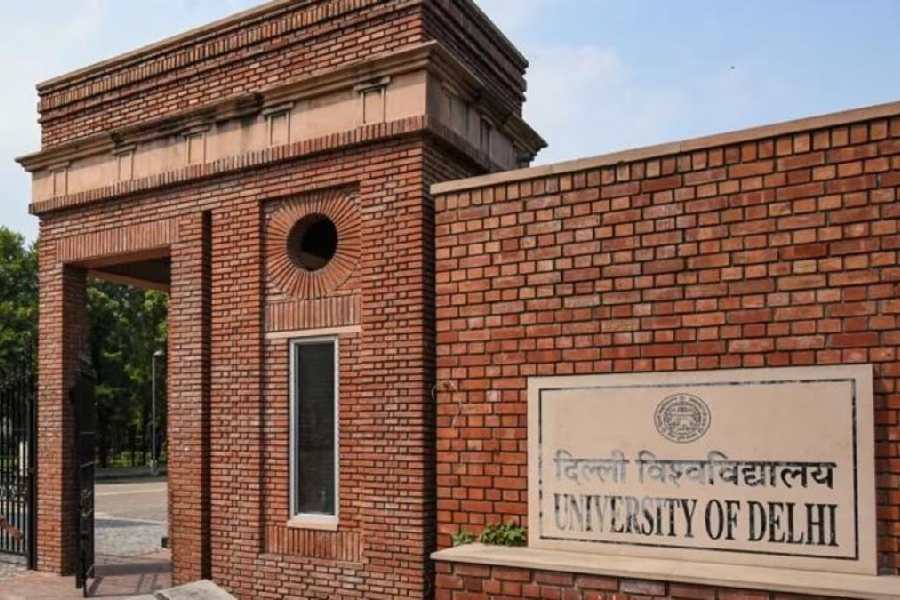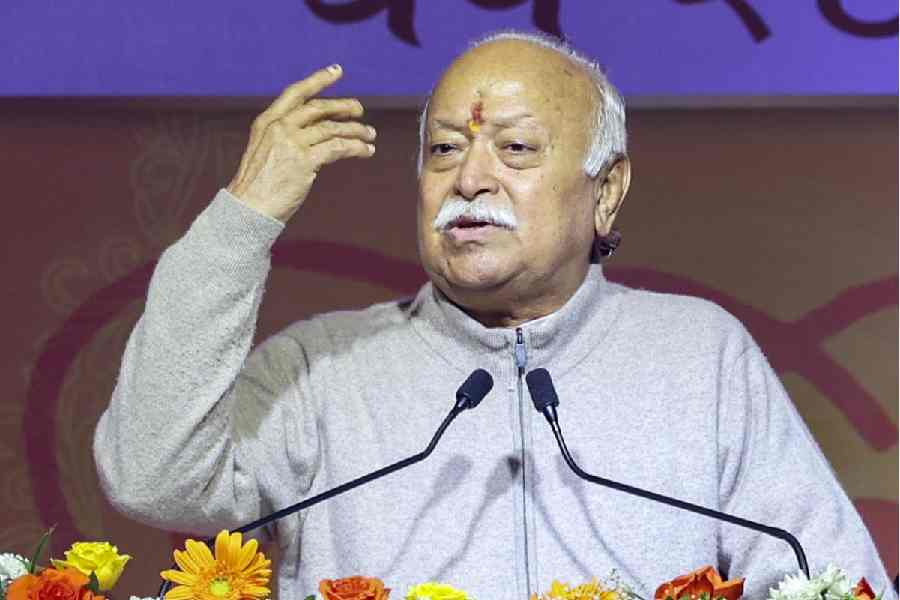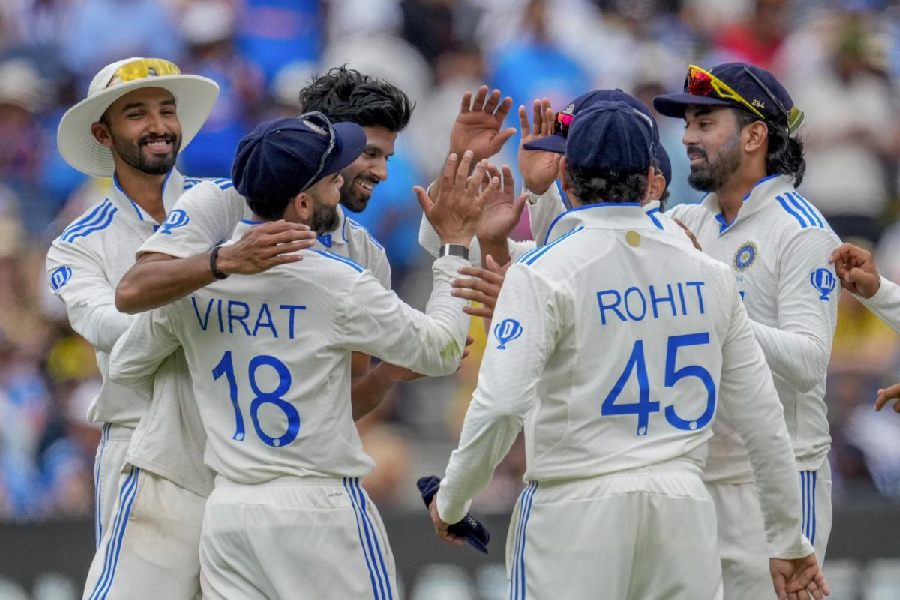A puja that commenced in Pabna district in undivided India about a month before native sepoys revolted against the East India Company, in what is known in history as the Barrackpore Mutiny, has now turned 200.
The Lahiris of Pabna celebrated their puja’s milestone at their current family seat in Rajpur, about 16km south of the city centre, where the puja has shifted since 1959. “Before that, we used to hold the puja in Ballygunge from 1950 to 1958. Our Pabna chapter had ended in 1949,” says the family’s 75-year-old patriarch Swapan Kumar Lahiri.
The puja was founded by Krishna Chandra Lahiri, whose father had shifted from Basirhat to Tantibanda village in Pabna, now in Bangladesh.

Anjali at Lahiri House on Saptami
Despite being uprooted, the family has tried to maintain continuity by sticking to the mantras and rituals followed down generations.
To mark the bicentenary, a book has been published which records the family genealogy over 13 pages. “The book is aimed to perpetuate a punthi that was copied by hand by my Chhordadu, my grandfather’s fifth brother, Sunil Chandra Lahiri, who was an engineer with Martin Burn. The original manuscript was too brittle to have survived but his hand-written copy has been preserved,” said Swapan Kumar, who belongs to the sixth generation since the puja founder.
The manuscript records the puja rituals followed by the family. “We are Shaivites (followers of Shiva). The custom of chhagboli (goat sacrifice) continues to this day, though the number of goats has got reduced to one,” he said.
A ghot dedicated to Goddess Chandi is installed at the start of devipaksha, marking the start of the daily reading of Chandi and bhog dedicated to the Goddess alongside the family deities Narayan and Jagaddhatri, which continue till Navami. On Panchami, a yantra (a geometrical diagram believed to aid meditation and emanate occult powers) is drawn on a wooden platform and the idol is installed on it. The seat is then worshipped. Bodhon takes place on Sashthi, infusing life into the clay deity that is crafted on the spot since Rathyatra.
Several distinctions mark out the rituals. Fish is an important component of the daily bhog, possibly linked to the puja’s origin in riverine East Bengal. This year on Saptami, Hilsa was offered for lunch and Boal for dinner, while on Ashtami, there were Katla and Bhekti chochchori for lunch and dinner on both Ashtami and Navami, with the send-off on Dashami being with Hilsa and Katla.
More significant variations are the two gunshots offered in place of 108 lamps at the start of Sandhi puja at the conjunction of Ashtami and Navami. “It is a Winchester .12 that belonged to my father till I got the gun licence,” Swapan Kumar says. This being a special year, he fired a couple more shots at the end of Sandhi puja as well. More shots were fired after the immersion.
On Dashami, the scimitar used for the sacrifice is handed to the youngest male member to ceremonially carry back to the store room. “This is called bhoratola, which includes other auspicious articles like vermillion, lamp, paddy, green coconut etc. The male members touch the bhora to the feet of each idol after which it is taken to the storeroom where the eldest daughter-in-law of the house performs a boron,” he said, showing photographs of the custom in the book.

Swapan Kumar Lahiri set to fire his gun to mark the start of Sandhi puja
The scimitar is believed to be in use since the puja’s inception. “A large plate on which bhog is offered also came from Pabna. It has the name of our puja founder inscribed underneath. It is believed to have been used for his annaprashan. Though it is taboo to offer bhog to a deity on a plate on which a human being has taken food, Krishna Chandra believed Durga to be his mother Anandamoyi who had become a sati,” says Santanu Lahiri, grandson of Sunil Chandra, who built the Rajpur house. “All puja utensils brought from Pabna in 1949 bear the initials ‘Lah Bah Estate’, standing for Lahiri Bari Estate,” says the banker, who is jointly in charge of the puja along with Saswata Lahiri and Sudipta Lahiri.
One custom that has seen a change over time is carrying the idol around from Rajpur to adjoining Harinavi decked up in jewellery. “Our procession with the bejewelled deity used to be a spectacle. In the mid-1970s, the police expressed their inability to provide protection if there was so much gold and silver on her. So we now take off the jewellery before setting out for immersion,” says Swapan Kumar.
This year, being a milestone, family members congregated in full strength. “The total number must have crossed 1,200. We had to ask them to come in batches on different days,” says Swapan’s son Shambodeb Lahiri.
Mandira Maitra has come after 27 years from Pune. Swapan Kumar’s sister Subhra Chakraborty has flown in from the US.
The women of the house are in charge of the kitchen. One of them is Rajasree Mukherjee, who was born in 1959, the year the family shifted to Rajpur. A special item cooked on Navami and left overnight, other than Hilsa fry, is naal-panta. Family members directly involved with other puja work also keep the fast. “We survive on tea and sherbet. Only the children and our 85-year-old aunt Purabi Lahiri, the oldest surviving family member, are allowed some sweets and steamed potato through the day,” she explains.
One of the stalwarts in the kitchen is Chhabi Lahiri, who has spent 42 years with the puja as a daughter-in-law. Another daughter of the house, Mousumi Chatterjee, landed from Delhi the day after Mahalaya and joined the kitchen brigade, and had cooked Patoler Dorma on Saptami and Chaltar Chutney the day before.
Such were the tithis this year that barely 40 minutes were available to cook Saptami bhog. “Since bhog cannot be cooked before sunrise we had kept everything ready, including the rice. As soon as the dhaak played, signalling sunrise, we got to work like running a race at the starter’s gunshot,” Rajasree smiles.
This year, people associated over the years with the puja, from the grocer to the florist, were invited to a meal on Panchami. The custom of the eldest daughter-in-law felicitating the dhaaki after immersion was also followed.
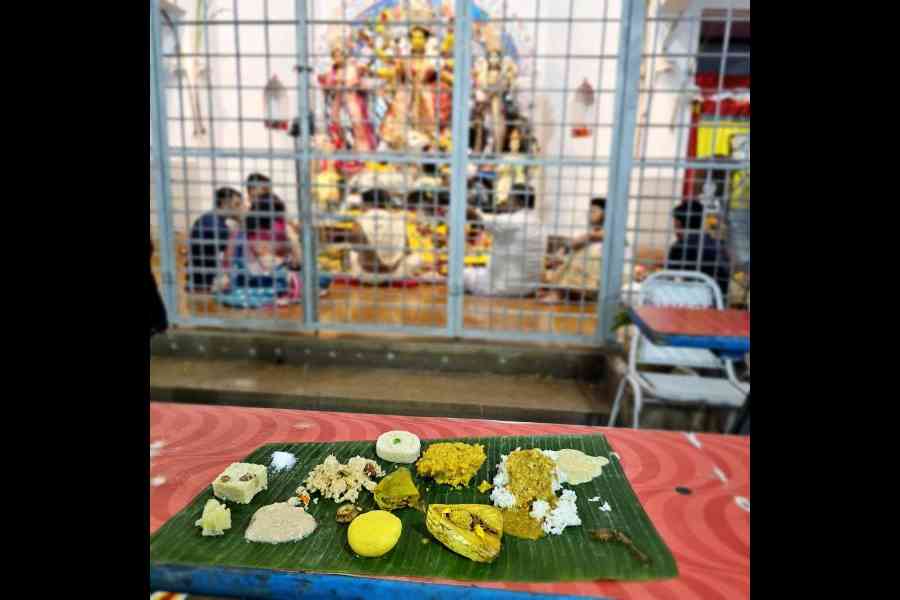
Saptami prasad offered to visitors
On Navami, family members presented a cultural programme before which Apurba Das, whose troupe used to stage a jatra at the puja, was felicitated. “Jatra palas were a fixture in Pabna on Saptami and Navami. We discontinued as audience interest waned,” says Santanu.
Acharya Chinmoy Lahiri, a classical vocalist who had trained the likes of Sandhya Mukherjee, Begum Parveen Sultana and Shipra Basu, had also performed at his family puja. There was a magic show by A.C. Sorcar, P.C. Sorcar’s younger brother, when the puja had turned 150, he recalls.
As the puja steps into its third century, Swapan Kumar plans to delegate more responsibility to the younger generations, starting with the transfer of his gun licence to son Shambodeb. “Unlike many other family pujas, we believe in doing as much as possible ourselves. If everything is handed over to professionals, how can we call it our own puja?” he smiles.

